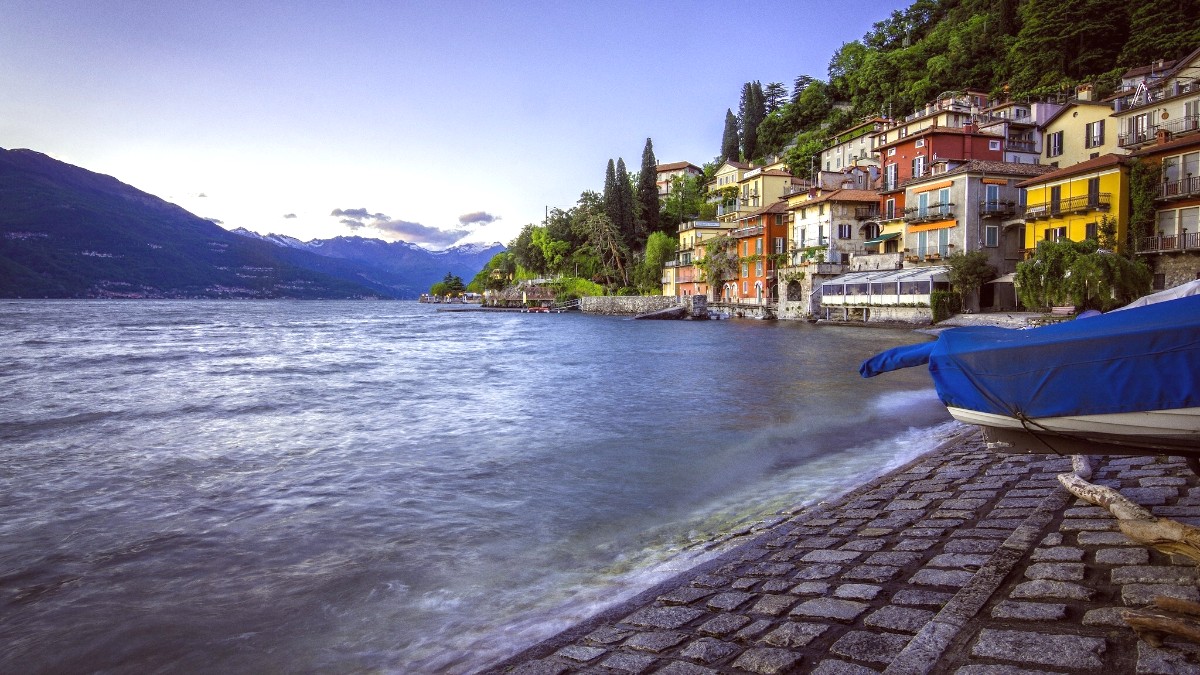
Lombardy And The Lakes, Italy
Cremona’s cuisine comes from its location in the vast, fertile Po Valley. The area historically rich in agriculture, producing grains, dairy, and pigs, forming the backbone of the local diet.
Food features Lombard influences (butter over olive oil, rice over pasta) and Emilia-Romagna influences (cured meats, stuffed pastas). Cremona is known for its confectionery and unique preserved fruits.
Pork (cornerstone), Butter/Cream (richness), Rice (staple for risottos), Fresh Egg Pasta, Grana Padano & Provolone Valpadana (local cheeses).
Candied fruits in a clear, mustard-flavored syrup. The mustard provides a piquant kick, contrasting with the fruit's sweetness.
Traditional nougat with honey, sugar, egg whites, and toasted almonds/hazelnuts. Available in soft and hard varieties.
Delicate meat-filled pasta (similar to tortellini) served in a rich, clear beef or capon broth. A comforting and flavorful winter dish, found in traditional trattorias and osterias.
A must-try, especially in colder months.
Candied fruits preserved in a sweet, pungent syrup flavored with mustard oil. Traditionally served with boiled meats or aged cheeses. Buy at specialty food shops.
A truly unique Cremonese specialty.
Cremona’s most famous sweet: nougat made from honey, sugar, egg whites, and toasted almonds/hazelnuts. Available in various textures. Find in pasticcerias and specialty food stores.
A globally recognized sweet tradition.
Focaccia, Pizza by the Slice (Pizza al taglio), and Panini (filled sandwiches) are good for quick, informal meals.
Torta Sbrisolona (crumbly almond cake), Panettone (Christmas specialty), and Artisanal Gelato (Italian ice cream) are popular.
Refined restaurants elevate traditional cuisine with contemporary twists. Expect impeccable service, elegant ambiance, and higher prices. Look for Michelin mentions.
Trattorias and osterias give an authentic taste of Cremonese cuisine in a casual, often family-run setting. Excellent for delicious, reasonably priced meals.
Pizzerias, Bars (coffee, pastries, panini), Focaccerias/Pasticcerias, and Supermarkets offer simple, delicious, and budget-friendly options.
This daily market features fresh produce, cheeses, cured meats, and other local food items. A great place to experience local life and pick up picnic ingredients.
Perfect for local immersion.
Gastronomias and Salumerias specialize in local delicacies like cured meats, cheeses, Mostarda, and Torrone. Ideal for edible souvenirs.
Find unique local treats.
Limited options available; focus on local Italian fare.
Embrace the opportunity to immerse yourself in the regional cuisine.
From refined establishments to casual eateries, Cremona has choices.
Pizzerias and bars for quick bites.
Awareness is growing. Some restaurants offer "senza glutine" pasta or pizza. Look for AIC (Associazione Italiana Celiachia) certified establishments. Always ask staff to confirm ingredients.
Increasingly available options.
For severe allergies, communicate clearly and specifically. While Italian chefs are often accommodating, smaller places may have less experience with complex restrictions.
Clear communication is .
Pasta and risotto are often safe choices. Remember to explicitly state your preferences to the serving staff.
Vegans may need to focus on self-catering and communicate needs very clearly. It is still a developing area in Cremona.
Local chefs or agriturismos offer classes making fresh pasta, regional sauces, or traditional desserts like Torrone.
Visit cheese factories (Grana Padano, Provolone Valpadana) or farms where Mostarda fruits grow. Insight into local ingredients.
Some restaurants incorporate the city's violin heritage into their ambiance, in historic palazzi. Look for places using strictly local, seasonal ingredients.
These experiences go beyond dining, deepening your appreciation for local food traditions.
Cremona has immersive culinary experiences. These include cooking classes and farm visits.
Knowing a few Italian phrases for dietary needs is a benefit.
For vegetarians, pasta and risotto frequently work well.
Vegans may need to focus on self-catering and communicate needs very clearly.
Tipping is not mandatory in Italy, but rounding up the bill or leaving a few euros for good service is appreciated. Remember that "coperto" (cover charge) is common and is not a tip.